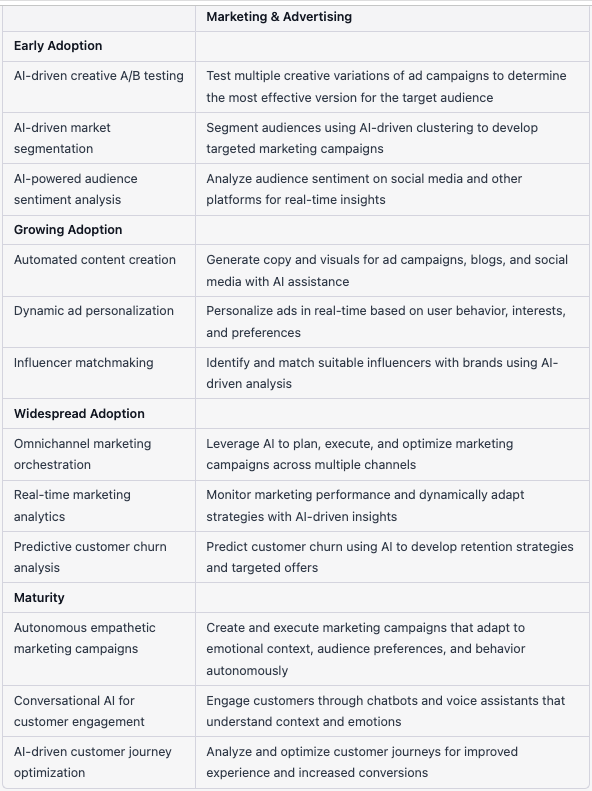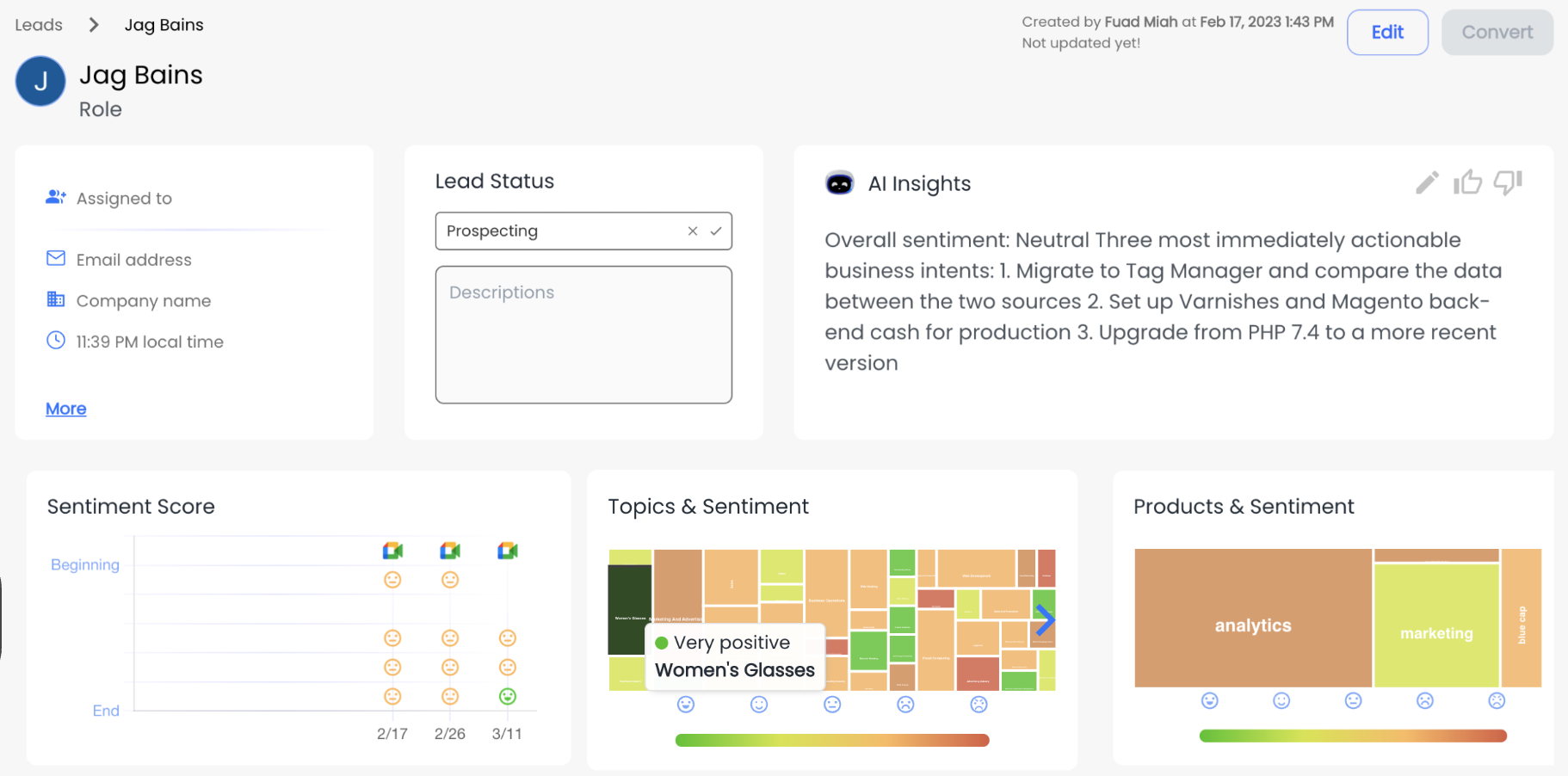The advent of generative AI is poised to unleash a tectonic shift in the way businesses operate, marking a paradigm shift that will redefine the very essence of innovation and competition.
Welcome, fellow pioneers of the digital world! You are about to embark on a thrilling journey through the uncharted territory of Generative AI. It’s a world that’s changing at breakneck speed, where innovation is the name of the game, and only the daring survive. So, buckle up, my friends! This is not just another buzzword; we’re talking about a seismic shift that will fundamentally alter the way we do business. Generative AI will become the invisible hand, creating unparalleled value across industries, reshaping competitive landscapes, and ushering in a new era of possibilities. As a CEO, your role in this narrative is pivotal. Are you ready to rise to the challenge and harness the disruptive potential of Generative AI? Stick with me, and we’ll explore the incredible opportunities and challenges that lie ahead, charting a clear and actionable roadmap for you to lead your organization into this brave new world. Let the adventure begin!
Understanding Generative AI: What’s All the Buzz About?
In simple terms, Generative AI is an advanced AI that creates new content, designs, or patterns by learning from data. It’s like a creative mastermind, generating ideas that go beyond mere automation or analysis and reshaping the foundation of our businesses.
Generative AIs like GPT-4 and BARD possess the ability to understand context, reason, and communicate in a natural, human-like manner. Their incredible versatility enables them to tackle tasks ranging from crafting persuasive marketing copy to significantly reducing operating costs, architecting and securing cloud infrastructure, coding complex applications, designing intricate 3D-printed products, and so much more.
As a CEO, you can’t afford to ignore Generative AI. Embracing it unlocks massive value across your business, propelling you toward growth and success. The world is moving fast, so let’s explore the extraordinary opportunities Generative AI offers!
Disruptive Applications: How Generative AI Transforms Industries
I insist you buckle up as we embark on a fascinating journey through the realm of Generative AI and its impact on industries far and wide! What are the potentials of digital humans, our own digital twins and the robots by Boston Dynamics enhanced with Generative AI? Imagine you could talk and sing in any language, like a native! Or sing as your favourite performer or someone else performing for you. This opens up as many questions as it does for the possibilities. Set aside 50 minutes and listen to these three episodes by MIT Technology Review, In Machines We Trust. Jennifer Strong, host of this podcast unfolds the disruptive potentials and the biggest challenges posed by generative AI.
The impact is profound, from legal to social. As a CEO, one must be aware of the risks as much as of the possibilities. As we dive into the industry-specific use cases, I am going to skip the entertainment industry as Jennifer has covered it thoroughly. If you are curious to experience generative AI in entertainment, give Spotify DJ a try.
Marketing and Sales – The New Alchemists
Wave goodbye to bland, generic campaigns! Generative AI is injecting new life into marketing and advertising by crafting hyper-personalized, context-aware messages that resonate with your target audience. It’s like having your very own creative alchemist, mixing together the right blend of copy and visuals, and turning marketing efforts into conversion gold. The following table is created with GPT-4, with a simple prompt of “Let us create a table with examples of generative AI in the marketing industry from early adoption to maturity”:
Let us pause here for a few seconds… grab a snack if you need to. What if I told you 80% of this post’s content was created with GPT-4? And further, I asked it to write it adopting my favourite writer’s style, Avinash Kaushik. If you read his blog, Occam’s Razor, you know what I am talking about. I manually toned it down to reflect a bit of my voice :). I am building my unique digital persona. If you are interested in how we are democratizing AI for marketers, I invite you to visit our marketing and AI capabilities page. Let us continue exploring a few applications related to our uses from the table above.
Emotional Intelligence at Scale – bluecap.ai
Feast your eyes on this picture below, where the colors themselves reveal a wealth of information. Dark red – uh oh! – that’s negative sentiment from customers, while the lovely green hues represent positive feedback.
We’re talking a treasure trove of data here, folks! From topics to products, sentiment analysis, customer intent, and even the likelihood to do business – all structured in real-time with perfectly orchestrated AI alignment. And that’s not all! With these insights, you can segment your customers and create hyper-personalized communication that delights everyone automatically. It integrates with your CRMs, Online Meeting Platforms, Emails, BigQuery and more.
Reimagining conversational experiences with Generative AI
Conversational experiences, combining instructional and open-ended conversations supported by large language models, are the future of customer interactions. With this approach, we can provide clear information while also allowing for more natural, human-like conversations. Plus, with the support of LLMs, we can provide even more personalized and nuanced responses, creating a truly satisfying and meaningful experience for users. Watch Google’s video on rapidly designing and deploying conversational experiences with their recently announced the Gen App Builder (beta).
Qualitative Analysis with Generative AI
In the past, businesses have primarily (if not only) relied on statistical analysis (quantitative example: 1 to 10 rating) due to the difficulties of analyzing emotional and open-ended question answers with human resources alone. However, the emergence of generative AI, such as GPT-4, is revolutionizing the way we approach Voice of the Customer analysis. Companies like Viable (askviable.com) are using these technologies to enable fast and accurate qualitative analysis, providing businesses with the insights they need to make informed decisions quickly.
At this point, we have acquired sufficient knowledge, and the abridged high-level examples provided by the industries below can assist in unlocking your creativity.
Operations
| Area | Examples |
| Process Automation and Optimization | Streamlining workflows, automating routine tasks, reducing costs |
| Supply Chain Management | Optimizing logistics, predicting demand, minimizing disruptions |
| Workforce Management | Automating talent acquisition, predicting employee churn, optimizing resource allocation |
| Predictive Maintenance | Anticipating equipment failures, proactive maintenance scheduling |
| Quality Assurance | Automating testing, identifying defects, improving product quality |
IT and Engineering
| Area | Examples |
| Software Development | Auto-generating code, debugging, optimizing algorithms |
| Infrastructure Management | Architecting and securing cloud infrastructure, automating deployment processes |
| Cybersecurity | Identifying vulnerabilities, automating threat detection and response |
Risk and Legal
| Area | Examples |
| Compliance | Monitoring regulations, automating reporting, identifying risks |
| Legal Research | Automating document review, generating legal briefs, predicting litigation outcomes |
| Contract Management | Auto-drafting contracts, identifying discrepancies, risk assessment |
R&D
| Area | Examples |
| Drug Discovery | Identifying potential drug candidates, predicting molecule properties, optimizing formulations |
| Material Science | Discovering new materials, predicting material properties, optimizing manufacturing processes |
| Climate Modeling | Simulating complex climate systems, predicting climate change impacts, informing policy decisions |
Identifying Golden Use Cases: Your Key to Competitive Edges
It’s time to level up your game! As a CEO, pinpointing the golden use cases for Generative AI in your organization is crucial for gaining a competitive edge in today’s fast-paced business landscape. But with so many possibilities, where should you begin? Fear not, my friends, for I am here to guide you through the process of uncovering those transformative applications that will propel your business to new heights.
- Focus on High-Impact Areas: Start by identifying the areas in your business where Generative AI can create the most significant impact. Look for processes that involve decision-making, creativity, or problem-solving – this is where the power of Generative AI truly shines. Consider automating tasks that are repetitive, time-consuming, and prone to human error, freeing up your team’s valuable time and resources for more strategic activities.
- Leverage Unique Organizational Data: Your company’s data is a goldmine waiting to be tapped. Generative AI thrives on large datasets, so capitalize on your unique organizational data to create tailored solutions that offer a competitive advantage. The more data you feed it, the more powerful your Generative AI becomes, allowing you to uncover hidden insights and make data-driven decisions with unparalleled precision.
- Experiment, Iterate, and Innovate: The road to success is paved with experimentation. Embrace a culture of innovation by launching pilot projects that explore the potential of Generative AI in various business functions. Learn from your successes and failures, iterate, and fine-tune your strategies as you uncover new use cases and applications. Remember, the key to unlocking the full potential of Generative AI lies in your willingness to experiment, adapt, and evolve.
- Prioritize Long-Term Value: When evaluating Generative AI use cases, keep an eye on the long-term value and scalability of the solutions you implement. Short-term wins are great, but true success comes from creating lasting impact across your organization. Invest in applications that not only streamline your processes and reduce costs today but also set the stage for exponential growth and innovation in the future.
- Collaborate and Learn: Finally, remember that you’re not in this journey alone. Join forces with other organizations, industry experts, and AI researchers to share knowledge, best practices, and lessons learned. Building a robust network of collaborators and staying up-to-date with the latest advancements in Generative AI will help you stay ahead of the curve and maximize the value you extract from this groundbreaking technology.
- Consider the Human Impact and Manage Change: As you explore the power of Generative AI, it’s crucial to acknowledge and address its impact on your employees. Embracing Generative AI will inevitably lead to changes in roles, responsibilities, and even the required skill sets within your organization. Transparent communication about the benefits, challenges, and implications of adopting Generative AI is essential for alleviating fears and fostering a positive attitude towards change. Invest in upskilling and reskilling programs to help your team adapt to the new landscape and make the most of the opportunities Generative AI presents. Remember, your employees are your most valuable asset, and their support and engagement will be key to a successful Generative AI transformation.
By carefully selecting the right use cases, focusing on these key principles, and effectively managing the human impact, you’ll be well on your way to harnessing the disruptive potential of Generative AI and securing a powerful competitive edge in your industry. So, roll up your sleeves and get ready to embrace the future!
Preparing for the Generative AI Arms Race: Future-proofing Your Business
As the adoption of Generative AI accelerates, businesses need to be proactive in embracing and integrating this technology to stay ahead of the curve. Here’s how you can prepare your organization for the inevitable AI arms race and future-proof your business:
- Invest in AI Talent: No AI revolution without the team, right? Assemble your league of extraordinary AI experts, and engineers to create and deploy tailor-made generative AI models that cater to your unique needs. And hey, don’t forget to nurture an AI-friendly culture that keeps the learning and growth going!
- Collaborate with AI Startups and Research Institutions: Why go it alone when you can join forces with the brightest minds in AI startups, research institutions, and universities? Forge strategic partnerships to tap into the latest AI innovations and cutting-edge research that’ll keep you miles ahead of your competitors.
- Embrace Agile Development and Experimentation: In the fast-paced world of AI, agility is the name of the game. Adopt agile development methodologies to quickly iterate and experiment with generative AI models. Foster a culture of innovation and remember: there’s no shame in learning from failure!
- Integrate AI Ethics and Responsible AI Practices: With great power comes great responsibility. Prioritize ethical considerations and responsible AI practices when deploying generative AI models. It’s all about transparency, fairness, and accountability – and let’s not forget user privacy and security.
- Stay Informed About Regulatory Developments: Keep an eagle eye on AI and data privacy regulations, both local and global. Craft a compliance strategy that stays in step with current and future regulations to sidestep any legal or reputational potholes.
- Monitor AI Advancements and Competitor Moves: Knowledge is power, my friends! Stay in the loop on AI advancements and keep tabs on what your competitors are up to in the AI arena. By staying informed, you’ll uncover opportunities to level up your AI game and maintain that all-important competitive edge.
So, there you have it! Equip yourself with these killer strategies, and you’ll be primed to conquer the Generative AI arms race and propel your business to new heights of innovation and success. Onward and upward!
The Role of the Chief AI Officer: Leading Your Organization’s AI Initiatives
We’re about to explore the crucial role of a new superhero in town: the Chief AI Officer (CAIO). let’s take a moment to emphasize the significance of having the AI project sponsored from the top and the critical role of the CAIO in driving successful outcomes. Here’s why a dedicated, top-tier AI champion is an absolute must for your organization:
Strategic Alignment: To thrive in the era of Generative AI, organizations need to align their AI initiatives with their overall business strategy. A CAIO, as a C-suite executive, has the authority and influence to ensure that AI projects are not only prioritized but also deeply rooted in your organization’s strategic vision. This alignment is vital to creating a cohesive, AI-driven future for your business.
Resource Allocation: AI projects can be resource-intensive, requiring significant investments in talent, technology, and time. A CAIO, backed by top-level support, can effectively allocate resources, secure funding, and mobilize the necessary infrastructure to drive AI initiatives to fruition. This top-level sponsorship is essential to remove bottlenecks and facilitate the smooth execution of AI projects.
Change Management: Integrating AI into your organization requires managing change on multiple levels, including processes, culture, and workforce. A CAIO, with their strategic leadership position, can champion the transformation, driving buy-in from all levels of the organization, and mitigating resistance to change. Their ability to communicate the benefits of AI and inspire the workforce to embrace the shift is key to successful AI adoption.
Holistic Approach: AI initiatives can have far-reaching implications across your organization, affecting everything from operations to customer experiences. A CAIO, with their cross-functional perspective and deep understanding of the organization’s workings, can ensure that AI projects are approached holistically, maximizing their impact and creating synergies between different departments and teams.
Risk Management: AI projects come with their fair share of risks, including potential biases, ethical concerns, and regulatory compliance. A CAIO, by virtue of their top-level position, is well-equipped to identify and manage these risks, ensuring that AI initiatives are implemented responsibly and in line with the organization’s values and legal requirements.
In a nutshell, my ambitious leaders, the CAIO is the linchpin of your organization’s AI journey, acting as a visionary, strategist, and change agent. By having a dedicated CAIO, you can effectively drive AI adoption and unlock the full potential of Generative AI, propelling your business to new heights of innovation, efficiency, and growth. So don’t hesitate—embrace the CAIO and charge fearlessly into the AI revolution!
Addressing the Challenges: Ethical and Practical Considerations
Let’s not forget that with great power comes great responsibility. As we harness the disruptive potential of Generative AI, we must also address the ethical and practical challenges that accompany this technology. Let’s delve into the key considerations that will help you navigate these complex waters with finesse:
Ethical AI: Generative AI, while being incredibly powerful, can also be a double-edged sword. We must address potential issues like bias, misinformation, and privacy concerns to ensure that AI serves as a force for good. Developing a robust ethical framework for AI deployment, rooted in fairness, accountability, and transparency, is paramount. This includes regular audits, bias mitigation, and a strong feedback loop, allowing you to address ethical concerns proactively and uphold your organization’s values.
Data Security: Generative AI relies on vast amounts of data, which makes data security a top priority. Implement stringent data protection measures, including encryption, access controls, and regular security audits, to safeguard your organization’s sensitive information. Moreover, consider investing in privacy-preserving AI techniques, such as federated learning and differential privacy, to minimize the risk of data breaches and ensure compliance with data protection regulations.
Talent Management: The adoption of Generative AI necessitates a highly skilled workforce adept at working with this technology. Invest in upskilling your employees and building a culture of continuous learning. Partner with academic institutions, industry experts, and AI platforms to foster a talent pipeline and ensure your organization is equipped with the necessary skills to drive AI initiatives successfully.
Legal Compliance: As AI becomes increasingly prevalent, regulatory frameworks will continue to evolve. Stay abreast of the latest legal developments and ensure your AI initiatives adhere to applicable laws and industry-specific regulations. This may include data protection laws, intellectual property rights, and regulations governing the use of AI in specific industries.
Collaboration and Partnerships: Navigating the complex landscape of Generative AI may require forging strategic partnerships and collaborations. Leverage the expertise of AI platforms, technology vendors, and research institutions to address the challenges and maximize the benefits of Generative AI. Collaborate with industry peers, regulators, and policymakers to shape the AI ecosystem and contribute to the development of best practices and standards.
In conclusion, my thoughtful leaders, embracing the transformative power of Generative AI requires addressing the ethical and practical challenges head-on. By doing so, you’ll not only ensure the responsible and sustainable use of AI but also strengthen your organization’s reputation and credibility in the long run. So, take charge and lead the way in creating a brighter, AI-powered future for all!
Getting Started: A No-Regrets Action Plan for CEOs
It’s time to roll up your sleeves and dive headfirst into the world of Generative AI. But worry not, for I’ve got you covered with a no-regrets action plan that will help you chart a path to success. Let’s get started, shall we?
- Educate yourself and your leadership team: Begin by building a solid understanding of Generative AI among your top executives (remember not to dive into the technicalities). Engage in workshops, seminars, and discussions with AI experts to gain insights into the technology and its potential impact on your business. The more knowledge you have, the better equipped you’ll be to make informed decisions and drive successful AI initiatives.
- Identify high-impact use cases: Work closely with your team to identify the most promising use cases where Generative AI can deliver significant value. Focus on areas that align with your strategic objectives and offer the greatest potential for competitive advantage, operational efficiency, or customer satisfaction.
- Invest in AI talent: Attract, retain, and develop top AI talent to ensure you have the right skillset to execute your AI strategy. Invest in upskilling your existing workforce and building a culture of continuous learning. Establish partnerships with academic institutions and industry experts to strengthen your talent pipeline.
- Develop an agile operating model: Create a flexible and scalable operating model that supports rapid experimentation, iteration, and deployment of AI solutions. Foster a culture of innovation and adaptability, allowing your organization to quickly respond to emerging opportunities and challenges in the AI landscape.
- Appoint a Chief AI Officer (CAIO): Designate a senior executive, such as a CAIO, to spearhead your AI initiatives and drive alignment across the organization. The CAIO should possess a deep understanding of AI, as well as strong strategic, operational, and change management skills.
- Embrace ethical AI practices: Develop a robust ethical framework for AI deployment, ensuring your AI initiatives adhere to principles of fairness, accountability, and transparency. Address potential issues like bias, misinformation, and privacy concerns proactively, and establish regular audits and feedback loops to uphold your organization’s values.
- Stay future-proof: Continuously monitor AI developments and stay ahead of emerging trends, technologies, and regulatory changes. Adapt your AI strategy as needed and maintain a long-term perspective to ensure your business remains competitive and resilient in the rapidly evolving AI landscape.
And there you have it, my fearless CEOs—a no-regrets action plan to embrace the disruptive potential of Generative AI and propel your organization to unprecedented heights. Take charge, seize the day, and let the power of AI transform your business for the better!
Dr. Smith, a medical researcher working on cancer treatments Dr. Smith employs generative AI to analyze vast amounts of patient data, medical literature, and existing treatments. The AI system identifies a potential drug candidate that targets cancer cells more effectively with fewer side effects. This discovery accelerates the drug development process and paves the way for improved cancer treatment.
Conclusion
My dear, trailblazing CEOs, we’ve come a long way on this exhilarating journey into the world of Generative AI. As we wrap up, I cannot stress enough the immense potential this groundbreaking technology holds for transforming the way we do business.
From revolutionizing industries to uncovering golden use cases, Generative AI is a force to be reckoned with. The possibilities are endless, but the time to act is now. By educating yourself, identifying high-impact opportunities, investing in AI talent, and adopting an agile operating model, you can harness the disruptive power of Generative AI and build a future-proof, resilient organization that stands tall in the face of change.
Remember, my ambitious CEOs, the AI arms race is upon us, and only those who act decisively and strategically will emerge victorious. So, buckle up and prepare to ride the wave of Generative AI innovation. The future is yours to seize—embrace it, conquer it, and let the creative maestro that is Generative AI lead your organization to unparalleled success!
Expert Tip
For the CIO or CTO, the focus will need to be on how to rework their architectures to easily incorporate APIs (such as those from OpenAI and Stability AI) and embed “intelligence” into a wider swath of applications and processes.
Ready to embrace the future of AI?
Let’s join forces to transform your groundbreaking ideas into reality, ensuring a seamless integration of AI-driven solutions while prioritizing workforce development and responsible innovation. Reach out to us today and let’s create a smarter, more ethical, and more efficient tomorrow together!






